Read next
The latest news, updates and expert views for ambitious, high-achieving and purpose-driven homeowners and property entrepreneurs.


Traditionally in the UK, property developers have built homes to sell. Those homes that have ended up in the private rental sector (PRS) have done so at some random point in their history. Build-to-rent properties, on the other hand, are properties designed and built to be rented out. When it comes to getting planning permission, in some parts of London you have a much better chance with a built-to-rent project than one made up of homes for sale.
Rather than being scattered around like most private rented homes, build-to-rent (BtR) properties are often in complexes of dozens of multi-let properties in the same building, owned by investors with large portfolios. And the future will almost certainly see more of them. There is evidence to suggest by 2038 there will be more people renting properties than owning homes in the UK.
Over a quarter of all households in London rent their homes from the private sector, double the number that did in 1991. This ongoing demand for rented accommodation means that savvy developers are out to capitalise on this growing market via build-to-rent schemes or private rented schemes. As in other large cities, London is seeing an increase in these schemes, and they are starting to make up significant proportions of the housing supply pipeline.
Partially thanks to Right to Buy under the Conservative governments in the 1980s, homeownership was pushed as the “right thing” to aspire to. As the UK moved towards a more free-market economy, renting property was almost considered immature. This was a contrast to the postwar years, when governments competed to build council housing for rent.
From the 1980s, people were encouraged to aim to buy their own home as opposed to spending their lives renting. If you look at the market, demand for homes for sale has far outstripped supply, with current UK figures estimating that almost a quarter of million new homes are needed each year to meet demand. If you can get these homes built, that’s not necessarily a problem, but only around half the required number are currently being constructed on an annual basis.
Well, there’s no one definitive reason, as it’s more a combination of factors. The first of these is the volatile nature of the housing market and the small profit margins associated with large-volume house building. In terms of investment, these make development and delivery of residential housing far less attractive than other types of commercial development. The second factor is the often slow pace of local government planning processes – these can take a long time, which affects the economic viability of schemes. The third reason is rising house prices, meaning that British housing stock – particularly in London – is desirable for wealthy foreign investors.
Nowadays, local planning authorities (LPAs) use assessments to judge the type of housing and tenures needed in their area, and renting is one of them. Taking a look at this open data can help you identify where (for example, city centres) and what (larger family homes, or HMOs-friendly flats) to build to ensure planning success.
Knowledge is power, and if you can demonstrate that you’ve designed a development that meets particular and diverse demographic needs in a specific area, this will help your application succeed.
One of the great advantages of this kind of development is the speed at which the project can be delivered, meaning that a large-scale, rental-led, mid-market model could be off the ground in as little as four years. As we shall see, although it doesn’t offer the immediate ROI build-to-sell projects have, the flexibility offered by the built-to-rent model can lead to a much faster rate of housing delivery - as much as ten times the build-to-sell model has. Despite the lower ROI (around 7.5% for build-to-rent compared to 17.5% on build-to-sell), the relative immediacy of the income still makes it attractive, and the longer-term ROI is equally attractive for those investors (or even councils) looking for a healthy income stream.
There is a perception out there that BtR schemes don’t deliver the same sort of returns as build-for-sale developments, but with the rising price of buying and renting, this is an outdated view. Both PRS and especially BtR investors are able to take advantage of soaring UK rent prices and, because house prices are also rising, the value of the asset increases over time too. This is why we have seen more and more large-scale investors like pension fund managers investing in BtR as part of their investment portfolios; they are the epitome of non-volatile investments, which appeals over the longer term.
Investment models do vary but there is at least agreement on how viability can be difficult to achieve without a proper valuation of future income; developments tend to fail largely because they neglect to carry out such valuations. Future income is, of course, dependant on a multitude of different factors, from local market rent rates to inflation, and from occupancy levels to operating costs. As such, the varying competing elements that need balancing make an overall picture hard to see.
There are, however, government funding options available to help you with development and infrastructure funding for schemes thought to be essential to the local community. The Homes England manage these (you may have known these as a PRS debt guarantee scheme in a previous life).
The strength of the build-to-rent model is income over the longer term as opposed to the more immediate handsome returns build-to-sell has. So, in order to make the entire process more economically attractive and sustainable, there are certain simplifications in the planning process that have been introduced in order to encourage developers to create the housing provision the government is lacking,
The national policy definition of build to rent in the National Planning Policy Framework glossary states that developers of this type will as a norm offer longer tenancy agreements of 3 years (or more) to all new tenants eligible to live in the country for that period under a single, professionally-managed ownership and management model. While this obviously doesn’t provide the lump sum return a sale property might have, it is certainly looking towards a long-term investment with a relatively stable income and a good ROI. The longer covenants for rent provision and the longer tenancies that build-to-rent is looking to foster makes it ideal as a long-term investment that provides stable returns fairly quickly, and is also ideal for brownfield development in town and city centres.
20% is generally considered to be a suitable benchmark for the level of affordable private rent homes to be provided (and maintained in perpetuity) in any build-to-rent scheme — it brings a balance between the provision a local authority might want and what is thought to be a financially acceptable return on investment. Should local authorities wish to set a different proportion they should justify this using the evidence emerging from their local housing need assessment, and set the policy out in their local plan.
Developers can also seek to meet affordable housing requirements (by agreement) via a commuted payment in lieu of on-site provision, or can deviate from the 20% benchmark by making a case on grounds of financial viability - however, the government has made it clear that this is still a basic benchmark to be respected given that many LPAs remain silent on the issue.
Affordable private rent is a distinct category designed for build-to-rent properties, and can be set at up to 80% of market rent (inclusive of service charges) and is to be maintained in perpetuity. The set discount is calculated (and recalculated) for each new tenancy or renewal, and in this way, it tracks market rental growth — or decline — in the development. Importantly, to maintain operational standards and efficiency, as well as to avoid ghettoisation or stigmatisation of APR residents, both “market” and APR units should be managed by the build-to-rent landlord.
Developers can also vary the proportion of APR units and the discount provided (compared to market rents) across a development over its lifetime, as long as this remains consistent with the overall affordable housing contribution secured within the Section 106 Agreement.
As the build-to-rent sector is a relative newcomer on the scene in the UK, a certain amount of pragmatism and flexibility needs to be built into the scheme so that both developers and the planning authorities are satisfied. The very flexibility afforded by the private sector investor also requires a certain amount of flexibility in terms of their exit (although this is by no means a given and some developers have committed to BtR over 30-year time spans).
Another socially advantageous aspect of your planning permission will be the insistence on providing on-site affordable private rent homes on a ‘tenure blind’ basis - i.e. they are integrated into the development, with all homes sharing the same entrance and communal facilities and enjoying the same management services regardless of tenure. This so-called ‘pepper-potting’ should be done throughout the entire project’s lifespan, not just fixed at the point of completion. Residents should also have the flexibility to move to different homes within the complex and pay the corresponding rent if they see a change in their personal circumstances.
BtR developments are looked upon favourably by local authorities and the government; this is because they are, in essence, looking to provide affordable, good-quality housing. An example of this favour is the government’s PRS taskforce, armed with a £10 billion housing debt guarantee fund to be made available for constructing private rented accommodation.
Similarly, London has the GLA’s Housing Zones initiative, designed to promote development of housing stock, with a £500 million budget and certain planning permission advantages in place for PRS developments within the zones. The budget can be used for developing key infrastructure, schools, libraries and other amenities to act as an enabler for PRS schemes. Similarly, many local planning documents make specific mentions to actively supporting the development of private rented homes where this will assist in the creation of mixed, inclusive and sustainable communities, such as in the London boroughs of Camden, Hackney, Brent, Ealing, Greenwich, Hammersmith and Fulham, and a development in Waltham Forest relied on its mix of 440 new homes, 2,000 sq m of flexible commercial and community space, including a microbrewery, grocery store and start-up business units, for its approval. For London as a whole, a BtR can deliver high-quality rental accommodation that supports social mobility and provides housing for the working population, particularly those who are not eligible for more traditional council housing but who are not at a stage of life in which they either wish, or are able to, move into homeownership.
The Mayor of London’s Supplementary Planning Guidance takes a positive view of build-to-rent as a way of delivering large housing schemes quickly, potentially with the LPAs as a joint venture investor, as opposed to the more prevalent, and largely inefficient, fragmented council-led model. In addition, the Mayor has also just mentioned creating an affordable housing classification for the rental market, which is a huge deal for those looking to live in London and is also great news as a catalyst for further action in BtR as a whole. Fingers crossed, this will trickle down to local authorities the length and breadth of the country.
Now you have affordable provision in place to help with your planning application, the good news is that the demand for more rented properties combined with the overall rising price of property creates some ideal opportunities for developers. BtR developers should bear in mind the following seven key areas:
The first thing to recognise is that you’re probably looking to target those that would have been first-time buyers in another era, but for whom buying now isn’t affordable – a demographic that is usually in the 25-30 age bracket. It’s fair to say that the market just isn’t offering a viable solution to these young professionals and workers as most new build developments are either three or four-bedroom houses and as such in the wrong price bracket. This where a well-placed, well-planned PRS scheme could prove to be a fruitful investment.
That said, PRS is also suitable for those who want to downsize and students whose only real option is to rent, particularly if they are only in their current location to study for a limited time.
Possibly the most hackneyed of clichés (thanks Phil and Kirstie!), but still such an incredibly important factor. The PRS schemes that really take off tend to be in urban rather than rural settings with good transport links. As a rule of thumb, you’re probably going to need to build at least 150 units to be sure of an acceptable return on investment, so you’re looking at medium-to high-density projects. London is an ideal place for PRS schemes, as are other areas with higher rates of employment, reasonably priced land and convenient, quick transport links.
The long-term nature of the build-to-rent sector means that it is wise to invest in quality surroundings to ensure constant income needed for a sustainable economic future. Having single ownership of a building and the potential to develop the associated public realm provides a strong incentive to create, manage and maintain good-quality places to attract people to sign up to long leases.
London and the UK would do well to learn from the US here, as PR-type or BtR developments over there treat amenities as unique selling points to gain a competitive edge and a way to distinguish their PRS from build-for-sale projects. Carry out an analysis of nearby amenities and enhance them in your BtR scheme to help improve your development’s appeal to both prospective renters and the planning department. In London, clued-up developers have already brought BtR developments to the market with communal facilities such as:
So, you can expect the market to go even edgier and more niche, depending on location and the demographic being targeted, and although some don’t necessarily provide a tangible ROI, these are still high-value assets. Something else to bear in mind here is that local authorities are even interested in exploring the possibility of including healthcare facilities and community centres in BtR developments.
This kind of internal economic and social sustainability, in addition to setting your development apart from competitors, creates a spirit of community and self-recognition, which could be important to the success of your venture.
Tenants who feel that they are part of something will be happier for longer, making your income more reliable in addition to simplifying many processes. Build-to-rent operators (and building stakeholders) will see their income directly depend on the quality of the homes and the shared places they create and maintain, and in fact, there is architectural research which shows that tenants who know one person in the same development are 75% more likely to stay and extend their tenancy arrangement, and those who know two people are 90% more likely to renew; this is the power of a sense of place in your build-to-rent project!
One of the other advantages of this kind of schemes is that they can really act as an anchor for regeneration, kick-starting wider development in an area quickly as a focal point for change. Build-to-rent’s ability to install new residents into an area provides the confidence potential retail and leisure investments need, as there is immediate, concentrated footfall in an area.
Good BtR developments have design consistency throughout the four key zones of the development:
In this area, market research is critically important when it comes to design as you need to be riding the crest of a wave of desirability rather than floundering beneath it. For example, double-height entrance lobbies are a frequently-used feature, and both outdoor and indoor communal space is an absolute must.
Open-plan public areas and strong management facilities are always important, but distinctive layouts of bespoke private areas (the actual apartments) are used to attract and retain tenants for longer periods, with en-suite facilities, equal-sized bedrooms and open-plan lounges featuring as desirables.
By the same token, don’t rule out modular design altogether, as it enables flexibility in room size, and non-load bearing walls give future tenants the flexibility to change layouts if they so wish. In terms of the building management adapting to needs, it could even convert a studio and a two-bed unit into a three-bed one, so futureproofing the development in terms of changes in demand.
Communal living spaces come with other benefits in that they can attract allowances in space standards. Essentially, local policies insisting on a range of unit sizes in a development could be interpreted in different ways, with one suggestion being a building-wide space standard with a mix of small, medium and larger-sized units. However, there are as many dissenters as there are supporters of this concept.
Whether you choose bespoke arrangements or flexible modular designs, it goes without saying that you need to maximise the number of units per floor to make your building as efficient as possible. Though unit size is important, you may need to sacrifice private outdoor space in order to make room for the communal areas, as these will be essential for providing a sense of place. By the same token, you should also be sure to offer units of different shapes and sizes. Unit flexibility will give you more sale options, so make sure your accommodation is flexible enough to cater to different groups, from young professionals to families and downsizers.
BtR developments are long-term investments; so it serves your interest that they hold their value and be as durable and safe as they are aesthetically pleasing. Spending on high-quality materials wherever possible will avoid problems with heating, damp, draughts, condensation, and good design can use concepts like thermal mass to get maximum efficiency from your investment (see here for more details!).
Equally important as the maintenance of the building is the feel of it. As mentioned, long-term renters expect quality furnishings for their money and, if appropriate, it is worth spending on good products that will last - remember: buy cheap, buy twice. In addition, this will ensure your finishings hold their value and that your tenants feel valued, improving their well-being and hopefully ensuring a repeat contract.
In terms of financial management and outlook, the long-term value of your BtR is in part dependent on the quality of your building management. If done correctly, effective building management will maintain your communal facilities properly and keep these key areas attractive and high-value.
Furthermore, these measures can help reduce operating costs to a minimum, which is often seen as an easier option than adjusting rental rates, so it’s important to have a good handle on what these may be. Usually they are:
Building economic sustainability into these projects clearly plays a big part here, and has been treated as a capital burden in the past due to the difficulty of measuring the longer-term savings vs. the initial capital outlay. The central government’s uneven carrot-and-stick approach in terms of incentive schemes has not really helped this situation. However, here is where PRS developments have an advantage, as there is real benefit in investing in sustainability. This is because the most common appraisal methodology is based on:
When used as a pure asset management tool, BIM (building information modelling) process will help this analysis and also add value with a full-service history of the development, including maintenance.
Quite apart from building maintenance, a key tool in encouraging a steady stream of interest and help you to retain tenants is how your building is managed.
First-rate customer service is right up there in terms of importance. In the long term, your development will live or die by its reputation, and the quality of customer service and building management plays a huge part in this. Even a simple concierge hub goes a long way towards attracting and retaining clients, as it gives the message to the outside world that this is a high-quality, well-maintained premium-level development. 24/7 service to meet your tenants’ expectations and needs is great, and on-site management with same-day response rates is an absolute must, particularly in larger London-based BtR developments. The growing use of review sites and easy access to social media channels means that bad news can spread surprisingly fast. As such, there are more reasons than ever to keep your tenants happy and your reputation high-level, and this is where good-quality building management comes into its own.
Local authorities and central government are increasingly enthusiastic about BtR developments – this is because they are, in essence, looking to provide affordable, good-quality housing.
For example, London has the GLA’s Housing Zones initiative, designed to promote development of housing stock, with a £600 million budget and certain planning permission advantages in place for PRS developments within the zones. The budget can be used for developing key infrastructure, schools, libraries and other amenities to act as an enabler for PRS schemes.
Draft supplementary guidance has just been issued by the Mayor of London to create an affordable housing classification for the rental market, which is a huge deal for those looking to live in London and is also great news as a catalyst for further action in BtR as a whole. Fingers crossed, this will trickle down to Local Authorities the length and breadth of the country.
Financial viability has long proved a concern for both developers and investors; as mentioned, Build-to-rent schemes generate a lower rate of return than the traditional build-to-sell model, with tighter profit margins based on steady income rather than capital release. BtR has the advantage of being a largely stable investment, but the longer-term benefit of this kind of project is a little alien to contemporary property investors, who have come to expect a more immediate return. The Affordable Housing and Viability Supplementary Planning Guidance expects a minimum investment period of 15 years to strike a balance between reassuring councils about the long-term economic viability and providing an acceptable ROI for the investors.
An essential part of the planning permission process is ensuring that all parties are clear on the types of discounted rate to be provided within a scheme - discount market rate, social rent, affordable rent and tenure blind advantages are all examples that should be integrated into the agreed provision.
Quality of build is a real concern for developers both in terms of ensuring a tenant stays on a long-term basis and also in terms of reducing maintenance costs over the longer term and so ensuring their return - the target market does not want to pay a premium to live in something that seems like student halls, with all the attendant horrors that brings.
As such, build-to-rent developments need to bear in mind certain expectations long-term adult renters have, and they must also be flexible in terms of the conditions it provides for tenants to ensure income - it’s worth remembering that a break clause for the tenant is often standard in a build-to-rent contract.
There is absolutely no doubt in our mind that PRS and BtR developments are here to stay and even have the potential to become a mature asset class all of their own. As they are still relatively new types of development it can sometimes be difficult to see the difference between one development and the next. As with many new innovations, people tend to stay close to what has been tried and tested initially, but don’t be surprised if you start to see more adventurous developers diverge from this formula. Here are some ways in which this may manifest:
The growth of PRS developments in larger cities and, in particular, London could prove to be essential to bridge the gap in housing demand and supply, and also to expand regeneration schemes. Those developments that place the tenant (or potential tenant) at the centre of community development certainly have the best hope of thriving.
Whilst PRS schemes can be financially viable options and profitable ventures, capital costs cannot be ignored, and operational management of the finished development and economically sustainable solutions are key. It should be noted that developers who can bring the developments to completion and market swiftly and also offer high-quality customer service will likely flourish. Finding the balance between collaborating with local authorities, having strong branding and offering a high standard of customer service will be crucial when looking to establish long-term profitability.
Given the intensive land use, the transformational effect they can have on the local economy and potential for regeneration, BtR investments are arguably social investments by their nature as you have to invest in a range of services and amenities to provide the financial resilience for the project to succeed.
With this in mind, here are some key advantages of BtR to remember when considering taking on this type of development:
For renters:
For investors:
For local authorities:
It must be remembered that at the moment in the UK, build-to-rent schemes are still a relatively new phenomenon that will take time to settle down as a viable long-term stable housing option, and have proved themselves as such in other countries. By their nature, build-to-rent developments are complex beasts that are more suited to longer-term lenders than quick-buck speculators, but when the market matures - and it will, quickly - they will prove to be wise, stable investments.
Now you have an idea of best design practices to get planning permission for your build-to-rent or PRS scheme. It’s certainly true that there are a multitude of factors to consider as well as policy complications that you need to negotiate. So, develop your engagement skills, understand your potential tenants and give them somewhere they’ll be thrilled to call home.
Urbanist Architecture is a London-based RIBA chartered architecture and planning practice with offices in Greenwich and Belgravia. With a dedicated focus in proven design and planning strategies, we help developers achieve ROI-focused results.
If you would like us to help you with your build-to-rent project, please don’t hesitate to get in touch.

Urbanist Architecture’s founder and managing director, Ufuk Bahar BA(Hons), MA, takes personal charge of our larger projects, focusing particularly on Green Belt developments, new-build flats and housing, and high-end full refurbishments.
We look forward to learning how we can help you. Simply fill in the form below and someone on our team will respond to you at the earliest opportunity.
The latest news, updates and expert views for ambitious, high-achieving and purpose-driven homeowners and property entrepreneurs.
The latest news, updates and expert views for ambitious, high-achieving and purpose-driven homeowners and property entrepreneurs.
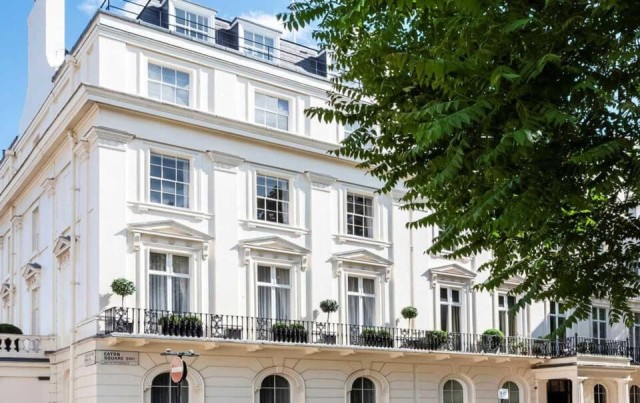



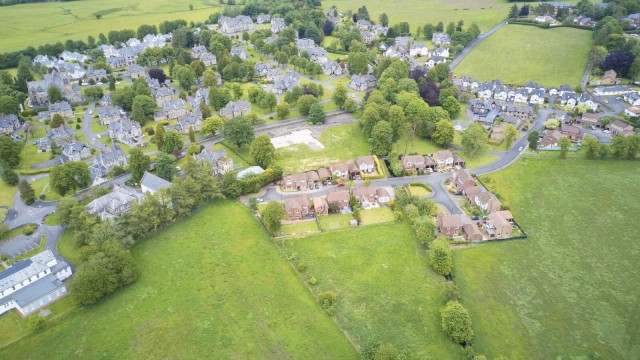

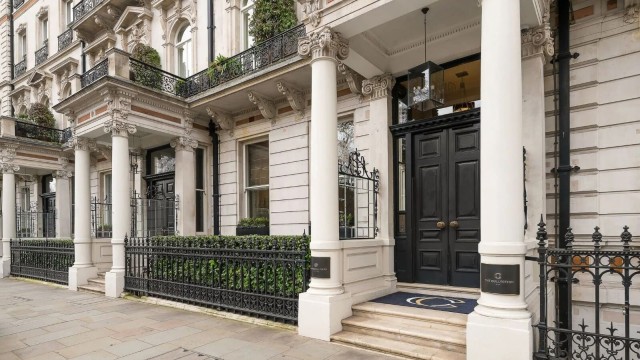
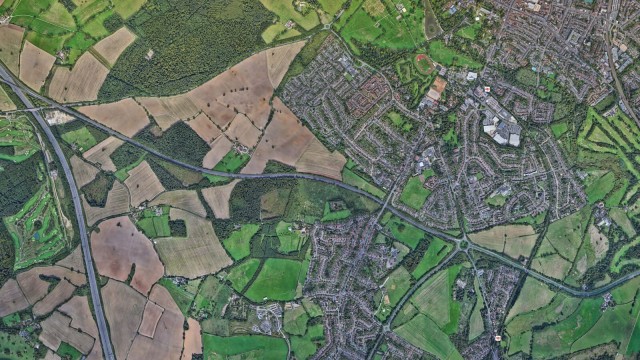
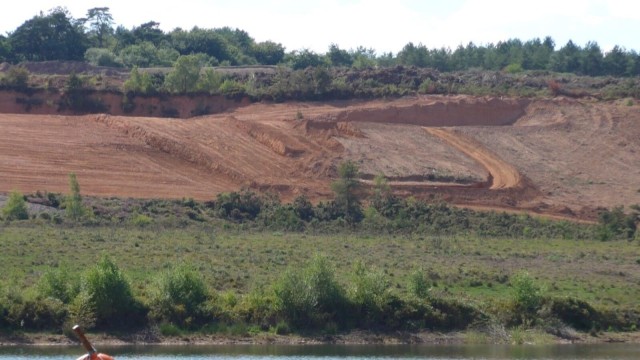

We specialise in crafting creative design and planning strategies to unlock the hidden potential of developments, secure planning permission and deliver imaginative projects on tricky sites
Write us a message